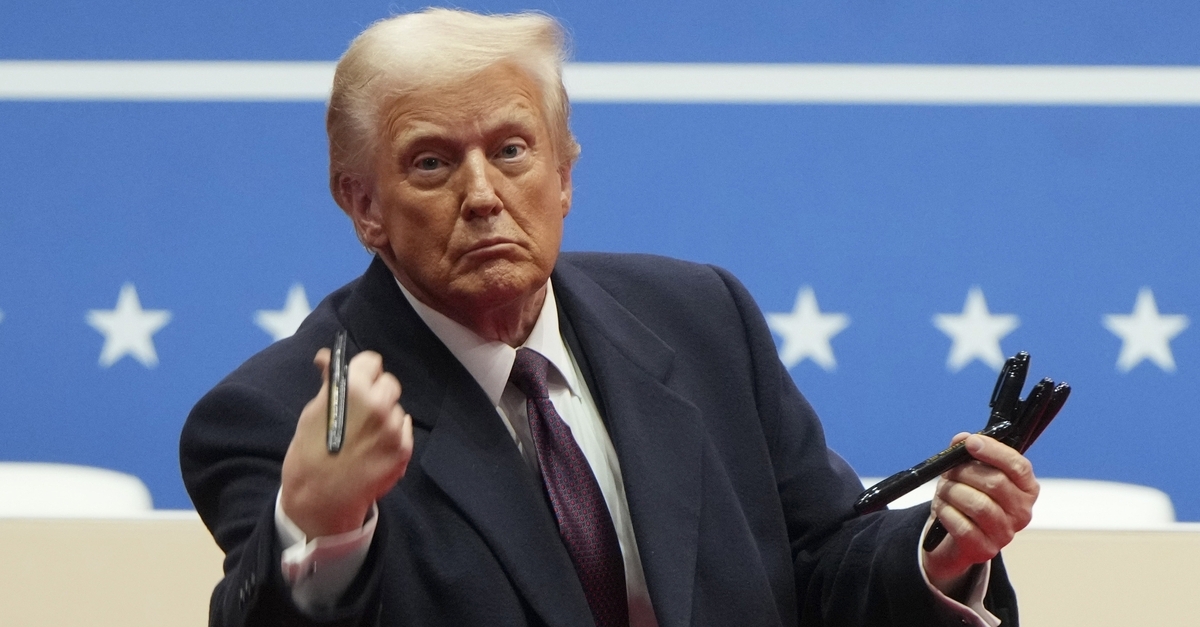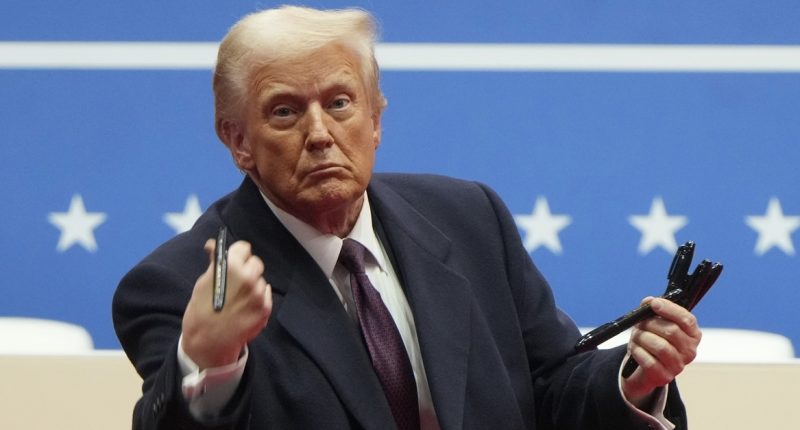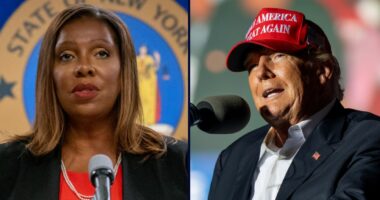
FILE — President Donald Trump throws pens used to sign executive orders to the crowd during an indoor Presidential Inauguration parade event in Washington, Monday, Jan. 20, 2025 (AP Photo/Matt Rourke, File).
A federal judge in Washington, D.C., handed the Trump administration a win on Thursday by allowing the government to move forward with plans to fire vast number of federal employees.
In a 16-page memorandum opinion and order, U.S. District Judge Christopher Cooper, a Barack Obama appointee, determined he likely lacked the jurisdiction to hear the complaints of five labor unions.
The court reasoned — without technically getting to the merits of the case — that the lead plaintiff, the National Treasury Employees Union, “fails to establish that it is likely to succeed on the merits.”
Instead, the judge said the plaintiffs had to seek “administrative review by the Federal Labor Relations Authority in the first instance, followed by judicial review in the courts of appeals.”
Essentially, Cooper shut the unions out of the district courts — but held open the possibility for relief from the court system at a later date.
The judge reasoned that the federal labor relations statute that originated the board “governs labor relations between the executive branch and its employees.”
The judge cites from a 2019 D.C. Court of Appeals case in which federal employee unions sued then-45th President Trump, at length:
The Statute further “establishes a scheme of administrative and judicial review.” Under that scheme, the Federal Labor Relations Authority, a three-member agency charged with adjudicating federal labor disputes, reviews matters including “negotiability” and “unfair labor practice” disputes. When reviewing unfair labor practice complaints, “the FLRA resolves whether an agency must bargain over a subject, violated the duty to bargain in good faith, or otherwise failed to comply with the Statute.”
Direct review of the FLRA’s decisions is available in the courts of appeals. The D.C. Circuit has repeatedly held that this scheme “provides the exclusive procedures by which federal employees and their bargaining representatives may assert federal labor-management relations claims.”
In other words, the court believes something not entirely unlike a very similar issue has been through the D.C. federal court system before.
And then, as of now, the Trump administration came out on top.
In that earlier case, however, the district court ruled in the unions’ favor — while the appellate court struck the lower court down by holding that the district court lacked subject matter jurisdiction.
More Law&Crime coverage: ‘As a student of English’: Judge mocks Trump admin attempt to wriggle away from language in spending freeze memo, maintains court-ordered pause
In the present lawsuit, the unions asked Cooper to issue a temporary restraining order that would block the government from firing nonessential workers and probationary employees as well as stop the implementation of the “deferred resignation program.”
While the court punted on applying the facts to the law, the order muses quite a bit about the administration’s efforts to downsize union-protected workers.
Cooper’s order begins:
The first month of President Trump’s second administration has been defined by an onslaught of executive actions that have caused, some say by design, disruption and even chaos in widespread quarters of American society. Affected citizens and their advocates have challenged many of these actions on an emergency basis in this Court and others across the country. Certain of the President’s actions have been temporarily halted; others have been permitted to proceed, at least for the time being. These mixed results should surprise no one. Federal district judges are duty-bound to decide legal issues based on even-handed application of law and precedent — no matter the identity of the litigants or, regrettably at times, the consequences of their rulings for average people.








